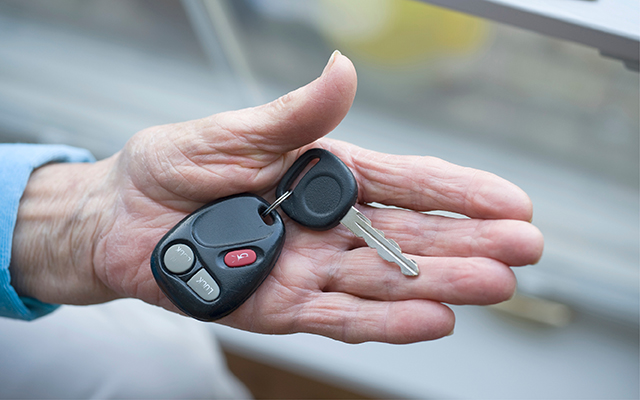My old friend Leo stopped by the office the other day for our monthly lunch. We chatted briefly, as we usually do, catching up on the news before reviewing our dining options. We decided on a Japanese place a block or so away, but because Leo is pushing 75 and tends to shuffle more than stride, a leisurely stroll was not in the cards. We climbed into his ancient Buick for the trip around the block.
Leo makes a modest living as a national political commentator, but his poetry has been translated into a few languages and he recently lectured at the War College. His brain, in other words, is considerably more functional than his legs. Behind the wheel of his Buick, however, my old pal tends to create a little more excitement than necessary. Like a good political reporter, he favors neither the right nor the left side of the street, preferring instead to patrol the middle. Any change in direction occurs only after some deliberation and in a wider arc than advisable, given the available amount of asphalt and the stream of oncoming traffic.
All this tends to reduce my appetite by the time we reach the restaurant.
It’s not my place, despite our long friendship, to suggest that Leo sell the Buick and invest in a bus card. There are few geezers who would willingly surrender their car keys; our independence depends on our mobility. This trade-off comes with its share of hazards, though. Folks my age and older are more likely to be involved in a traffic accident than drivers in any other age group. Still, it’s not a conversation most of us would welcome.
“The task of identifying and helping older adults who are unaware of decline in cognition impacting road safety can be overwhelming for family members,” says Lisa Kirk Wiese, PhD, an associate professor at Florida Atlantic University’s College of Nursing.
Weise and her team of researchers recently published a study designed to help caregivers determine whether it’s time for elderly drivers to leave the driving to others. “Nurses who care for older adults in public health settings can play a vital role in understanding and identifying the cognitive mechanisms that inhibit effective driving and help to identify older adults who may be at risk for unsafe driving and who would benefit from a driving evaluation,” Wiese says.
This is not the sort of advice Leo would welcome. Like most geezers — including this one — avoiding disaster on the road is all the evidence we generally need to convince us that we haven’t yet become a threat to public safety. But another sort of test I stumbled upon the other day got me thinking about a transportation option that’s not just safer, but healthier as well.
University of Colorado scientists recruited a group of sedentary people in Boulder and asked them to ride electric-powered bikes for 40 minutes a day, three times a week, for a month. At the end of the test, each of the participants showed improvement in a variety of fitness markers, but more interestingly, several of the test subjects enjoyed the riding so much that they bought their own bikes.
I’m not sure whether Leo has ever owned a bike, but as a geezer who rides pretty much every day, I can testify to the two-wheeler’s many virtues — even without electric power. It’s a great way to get around town while sneaking in a bit of exercise. Best of all, in Leo’s case, there’s no passenger seat.

This Post Has 0 Comments